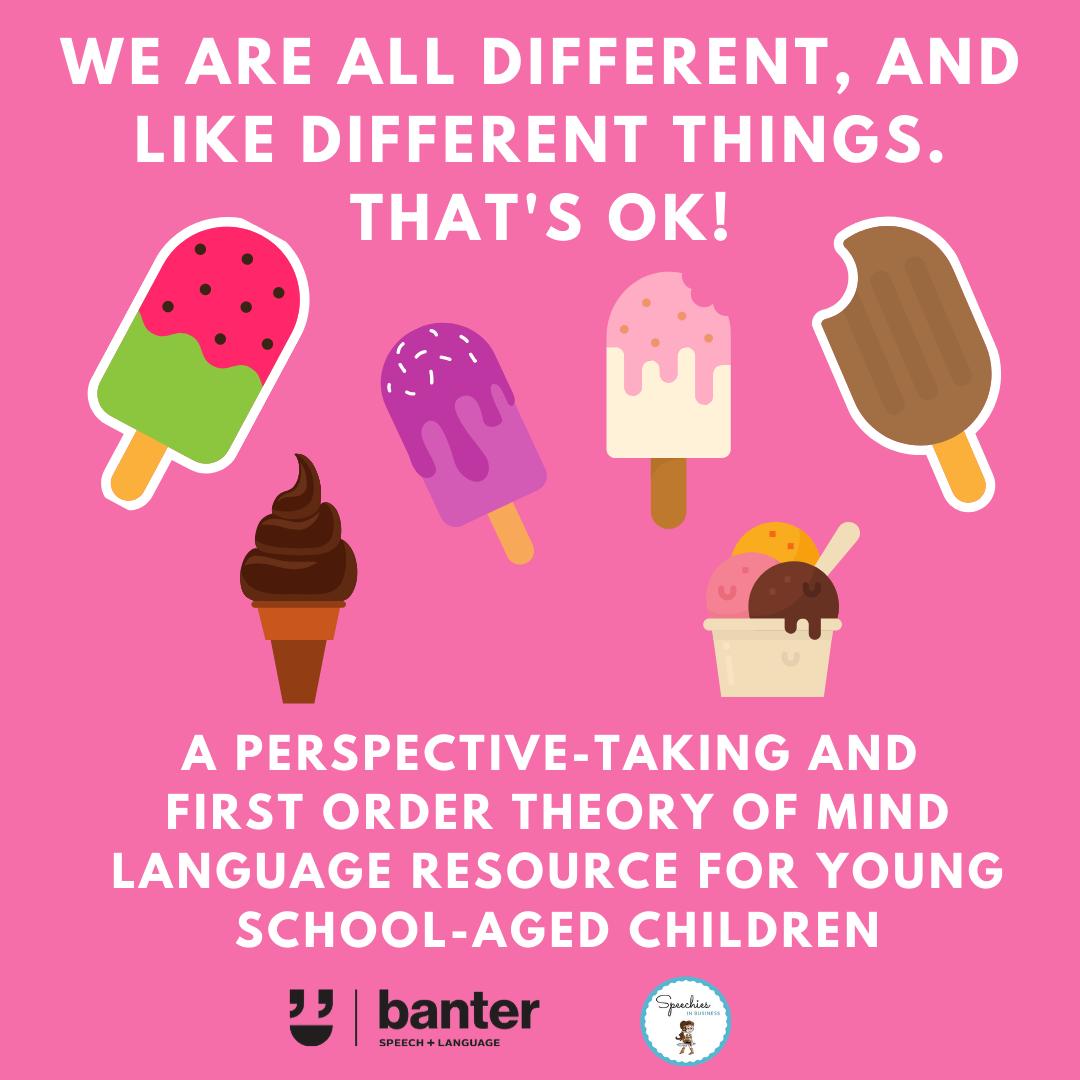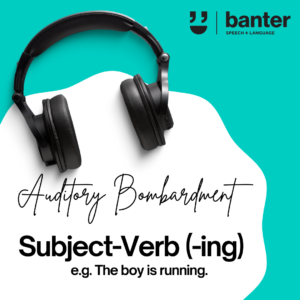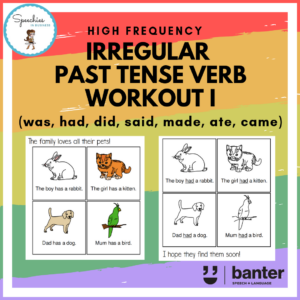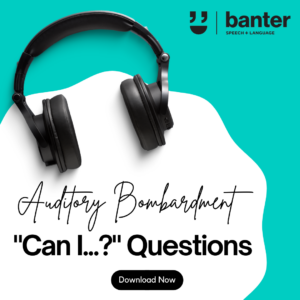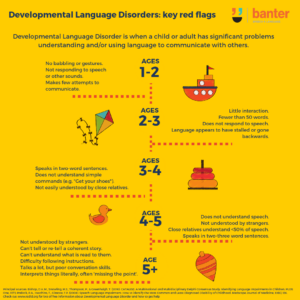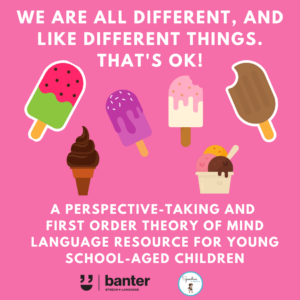(L322) Theory of Mind: We are all different, and like different things. That’s OK!
$5.99 including GST
For most of us, between the ages of 4 and 5 years, we learn that other people want and like different things. This is called “first order” Theory of Mind.
Some of us need some extra help to learn that people want and like different things. In this 18-page no-prep resource, we start off by looking at how different animals and people do different things. We then talk about how different people feel different emotions at different times. We then show children how different people like different things, and how that is OK!
Description
We are all different, and like different things. That’s OK! A perspective-taking and First Order Theory of Mind language resource for young school-aged children.
Some children have difficulties understanding others’ feelings and perspectives. They may have trouble fitting in and making friends, e.g. in the classroom, the school playground, at birthday parties, in team sports, and in other social situations. This can be very worrying for parents.
To understand that other people have their own thoughts, wants, motives and feelings is also called having a “Theory of Mind” (ToM). Janet Wilde Astington defines Theory of Mind as: “…our understanding of people as mental beings, each with his or her own mental states”.
We use Theory of Mind to explain our own behaviour to others (e.g. by telling them what we think and want). We also interpret other people’s speech and behaviour by considering their thoughts and wants.
For most of us, between the ages of 4 and 5 years, we learn that other people want and like different things. This is called “first order” Theory of Mind.
Some of us need some extra help to learn that people want and like different things. In this 18-page no-prep resource, we start off by looking at how different animals and people do different things. We then talk about how different people feel different emotions at different times. We then show children how different people like different things, and how that is OK!
For other resources, see our:

